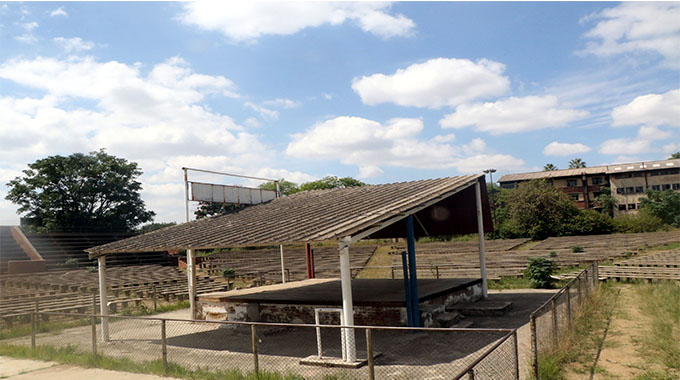The echoes of liberation: Stanley Square’s untold stories

Raymond Jaravaza, [email protected]
ITS Friday mid-morning in Makokoba suburb, just a day after Zimbabwe celebrated its 44th anniversary of independence from colonial rule, and the Chronicle is on a mission to discover how well the youth are acquainted with their nation’s history.
Bulawayo, known as the country’s cultural heart and its second-largest city, is home to numerous historically significant sites. However, the news team specifically chose Stanley Square for its unique significance; this emblematic site is nestled in a neighbourhood recognised as the city’s inaugural black African township.
As one approaches the city centre, the prominent Stanley Square and its adjacent counterpart, Stanley Hall, stand out. They are situated along a bustling street in Makokoba suburb, flanked by a series of semi-detached homes and apartment buildings.
Sihlangene Mpala, who, by a twist of fate, resides with her grandparents in a dwelling merely a stone’s throw from Stanley Square’s gateway, admits she primarily associates the venue with the musical events it hosts, recalling the last concert she attended there approximately five years prior.
“It was sometime before the country experienced the Covid-19 pandemic, I think around 2019 when Clement Magwaza (a rhumba music star) had a show at Stanley Square that I last entered the place. I have no idea how it is tied to the history of the country except that it’s really a very old place that must have been built when my mother was still young. My mother was born in 1963, which makes her 61 this year in July,” said Mpala.
When it was put across to the 35-year-old mother of two that Stanley Square was, in fact, built in 1936, Mpala felt vindicated by her earlier statement that the iconic structure “is a very old place”.
“So I was right, it’s very old . . . so it was built when my grandparents were not even born. But like I said I have no idea how it is linked to the independence of the country,” she added.
If a history teacher could spare a few minutes with Mpala, perhaps the educator would have given Mpala an impromptu history lecture about how the iconic Stanley Square was associated with the country’s liberation struggle as intellectuals used to meet there when the liberation struggle started, carrying forward the spirit of resistance.
As put by the late historian and playwright Cont Mhlanga in an interview with this publication in 2020: “We can’t talk of the liberation of the country without the mention of Makokoba and Stanley Square, everything started here,” said Mhlanga back then.
Next, we talked to a 26-year-old man who only identified his name as Reuben who said he was born in Bulawayo but often finds himself wondering what goes on behind the high walls of the building when he passes by in a commuter omnibus.
“I don’t even know the name of the building because there is no clear sign outside. At least the one next to it is called Stanley Hall and anyone can easily see the name. I often wonder what really happens or used to happen in that building (Stanley Square). In fact, I used to suspect it was one of those closed beer gardens where old people used to buy amasese (opaque beer),” said Reuben.
In 2017, the Government declared both Stanley Square and Stanley Hall national monuments.
Stanley Square has been known to be a revered venue for the country’s nationalists such as the late Father Zimbabwe and Vice-Presidents, Joshua Nkomo, John Nkomo, Joseph Msika and many others.
It’s a historical fact that 30-year-old Killian Moyo of Mzilikazi suburb which interestingly is close to Stanley Square knew in bits and pieces, thanks to information he gathered from his late grandfather.
“My grandfather used to tell stories about how one day he, together with his neighbours, were beaten by the police for attending a political meeting before the country got independence. I don’t have much knowledge about the place but I know from my grandfather that meetings used to be held there, sometimes at night, to avoid being seen by Rhodesian police officers,” said Moyo.
Chronicle took time to walk inside Stanley Square and the level of decay observed by the news crew is horrifying as concern has been raised over the state of disrepair in institutions associated with the country’s liberation struggle, coupled with a lack of narrative to preserve the liberation history.
The terraces are overgrown with grass, shrubs have taken over the place and trees lining the vast inside open space appear not to have been trimmed in years. The only solace is the immaculate Stanley Hall next door, which the Bulawayo City Council renovated to the tune of US$200 000.
A lecturer at the Great Zimbabwe University’s History, Archaeology and Development Studies department Phineas Marufu said the linkage between youths and the history of the country can be achieved through continuous re-evaluation of the curriculum in schools.
“The reality is that the youths are so much obsessed with foreign influences such as foreign artistes, cultures and goods that they are losing their own identity in the process. They have little interest in their own history, culture and the country’s identity as a people of Zimbabwe who are bound by languages, our national heritage and social fibre.
“In trying to build strong linkages between the youths and the history of the country it’s important to do it in a way that they understand such visuals that can be easily consumed on social media platforms such as TikTok and Facebook,” said Marufu.












Comments